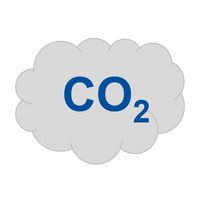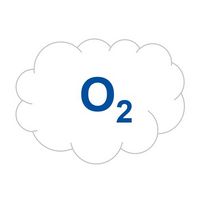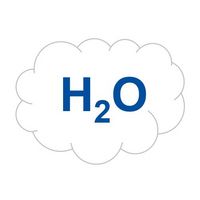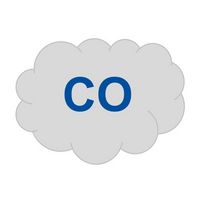Exhaust gases
The exhaust gases are a result of the combustion process, that's because the combustion in the combustion chamber it's usually incomplete.
Complete combustion: AIR + FUEL → CO2 + H2O
Incomplete combustion: AIR + FUEL → CO2 + O2 + H2O + HC + CO + NOx + PM
The most common components on the exhaust gases are:

Carbon dioxide
The CO2 present is the result of the combustion process. It is not toxic at low levels, in addition the atmospheric CO2 is the main source of carbon on our planet and is essential for the photosynthesis process of plants.
An excess in the concentration of this gas causes the greenhouse effect which raises the planet's temperature excessively, progressively warming the earth's surface.
Inhalation of high concentrations can affect respiratory function and cause excitement followed by central nervous system depression. High concentrations of CO2 can displace oxygen in the air, resulting in lower oxygen concentrations for breathing.

Oxigen
This compound is the oxygen in the air left over from the combustion process.
A high O2 value may be due to a poor mixture, a combustion that does not occur or a broken exhaust.
A value of 0% means that all the oxygen has been exhausted, if the CO is also high it is indicative of a rich mixture. Normally the Oxygen value should be below 2%.

Water
H2O it is partly sucked in by the engine (humidity in the air) or is produced as a result of “cold” combustion (engine warm-up phase).
It is a by-product of combustion and is expelled by the vehicle's exhaust system, it can be seen especially on colder days, as white smoke that comes out of the exhaust, or in the case of condensing along the pipe a drip occurs.

Carbon Monoxide
CO is an odorless, colorless, tasteless, toxic and highly flammable gas that is produced by the poor combustion of substances such as gas, gasoline, wood and coal, among others.
If it is breathed, even in moderate amounts, CO can cause death by poisoning in a few minutes because it replaces oxygen in the hemoglobin of the blood and prevents the transport of oxygen to the cells.
Regarding its impact on the environment, it is an extremely flammable substance that reacts violently with oxygen, acetylene, chlorine, fluorine and nitrous oxides, and can cause toxic fumes and fires if there are sources of heating. When combined with other atmospheric pollutants, it forms tropospheric ozone (close to the earth's surface) that causes significant burns in humans and is harmful to native flora and fauna.
Treatment: remove the person from the source of exposure, and take measures to ensure their breathing. Oxygen functions as a specific CO antagonist and for this reason is administered as a treatment.
CO is controlled by Diesel Oxidation Catalyst (DOC).

Hydrocarbons
Hydrocarbon emissions are composed of unburned fuels as a result of insufficient temperature. Diesel engines normally emit low levels of hydrocarbons and emissions occur principally at light loads. The major source of light-load hydrocarbon emissions is lean air–fuel mixing.
There is a great variety of hydrocarbons emitted into the atmosphere, but those of greatest interest, due to their impacts on health and the environment, are volatile organic compounds (VOCs). These compounds are ozone precursors (vehicles are responsible for about 50% of the emissions that form ozone ) and some of them, such as benzene, formaldehyde and acetaldehyde, are highly toxic to humans and can cause irritation to the eyes, skin and lungs and can cause cancer.
They are controlled by Diesel Oxidation Catalyst (DOC).

Nitrogen oxides
Nitrogen oxides (NOX) are two different nitrogen gases: nitric oxide (NO) and nitrogen dioxide (NO2). NOX refers to the combination of the two gases due to the interconversion facilities that they present in the presence of oxygen.
Nitrogen oxides are formed when fuel is burned. The main sources of NOx are motor vehicles and the burning of fossil fuels.
Effects:
- They contribute to the formation of ozone in the lower layers of the atmosphere, which contributes to the creation of photochemical fog (smog) and the greenhouse effect, when they react with volatile organic compounds.
- They cause acid rain by converting NO to nitric acid when it comes into contact with moisture.
- They are very toxic gases for humans, especially NO2, if they are inhaled in high concentrations and for a short period of time. Corrosive to the skin and respiratory tract.
NOX are controlled by Selective Catalytic Reduction (SCR).

Particualte Matter
Particulate matter emissions in the exhaust gas are resulted from combustion process, most of them are resulted from incomplete combustion of the hydrocarbons in the fuel and lube oil.
They may be originated from the agglomeration of very small particles of partly burned fuel, partly burned lube oil, ash content of fuel oil, and cylinder lube oil or sulfates and water. Particulate matter is responsible for the black smoke associated with diesel powered vehicles and the emissions from diesel engines are considerably higher than from gasoline engines
PM is recognized as one of the major harmful emissions generated by the use of diesel engines; therefore, it is subject to exhaust engine emission regulations worldwide. They have been associated with increased symptoms of respiratory diseases, reduced lung function, exacerbation of asthma, and premature deaths from respiratory and cardiovascular conditions.
They are controlled by Diesel Particulate Filters (DPFs).
